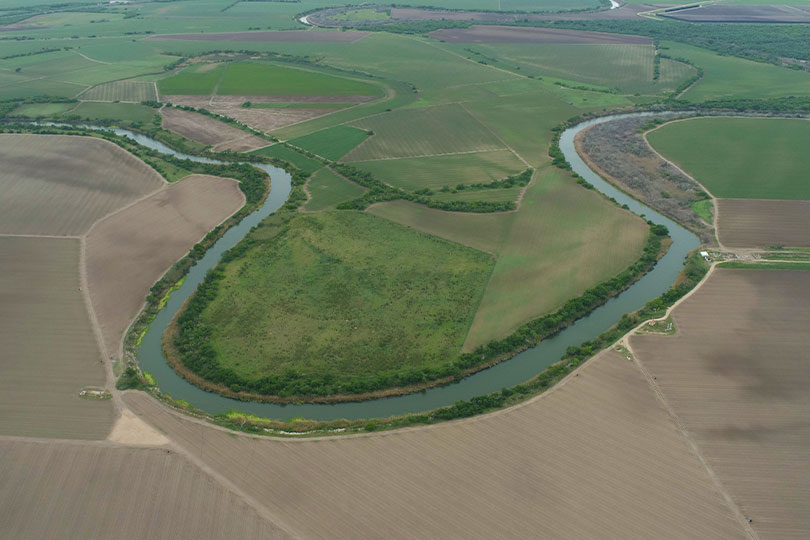By Julie Tomascik
Editor
An amended 1944 water treaty between the U.S. and Mexico may offer some relief to Rio Grande Valley farmers grappling with severe water shortages.
The International Boundary and Water Commission (IBWC), which manages cross-border water treaties, announced the two nations signed a long-awaited agreement. This amendment, Minute 331, provides Mexico with greater flexibility in meeting its treaty obligations to deliver water to the U.S.
“The water crisis for Lower Rio Grande Valley agriculture and its communities is a dire situation. The new Minute has ‘tools’ to help Mexico comply with its obligations under the treaty,” Texas Farm Bureau (TFB) President Russell Boening said. “However, time will tell if Mexico is a willing partner. Otherwise, the agreement, unfortunately, becomes just more words on paper that do nothing to produce an immediate delivery of water.”
Rio Grande Valley farmers and ranchers have faced severe challenges due to prolonged drought and delays in Mexico’s water deliveries.
Under the original treaty, Mexico is required to deliver 1,750,000 acre-feet of water to the U.S. from six tributaries over five years—an average of 350,000 acre-feet annually.
Currently, Mexico owes the U.S. over 1 million acre-feet of water with the October 2025 deadline quickly approaching.
Treaty amendment provisions
The amendment allows Mexico to meet its delivery obligations by relinquishing water allocated to it under the treaty. It also enables the transfer of water stored in the Falcon and Amistad international reservoirs to the U.S.
Mexico also may now deliver unused water from the San Juan and Alamo Rivers, which are outside the original six tributaries specified in the treaty.
One immediate issue addressed by the amendment is Mexico’s offer to deliver 120,000 acre-feet of water. Rio Grande Valley farmers were initially hesitant to accept the proposal, fearing the state might require farmers to offset the water by reducing their own storage.
But the amendment eases those concerns by allowing Mexico to fulfill its obligations using water from its reservoirs, raising hopes for sufficient transfers to support the next planting season.
“What’s yet to be seen is the amount of water that Mexico is willing to transfer. This minute order created some new tools that allow them different ways to deliver water,” said Brian Jones, a Rio Grande Valley farmer and TFB District 13 state director. “The longer answer is we don’t know how much it helps and how quickly it’ll help.”
Broader implications
U.S. officials welcomed the agreement, which was delayed until after Mexico’s June presidential elections. IBWC Commissioner Maria-Elena Giner emphasized the significance of the deal for addressing long-standing water management challenges in the Rio Grande Basin.
“The last 30 years of managing over-stretched water resources in the Rio Grande basin have produced broad agreement that the status quo was not acceptable,” Giner said. “With the signing of this amendment, Mexico has tools for more regular water deliveries that can be applied right away.”
The agreement includes temporary provisions to address the current water shortfall, set to expire in five years unless extended. It also establishes longer-term initiatives, such as an environmental working group to explore alternative water sources and the formalization of the Lower Rio Grande Water Quality Initiative to tackle issues like salinity.
Holding Mexico accountable
While the amendment offers hope for near-term relief, the path forward remains uncertain.
“We do need to keep pressure on Mexico,” Jones said. “They need to be more readily pushed to make our water available to the United States, and it needs to be more than just water that they can’t capture, which I think this agreement does allow that to happen. But we need constant pressure on Mexico to make sure that they are abiding and delivering the water that’s owed to us.”


Leave A Comment